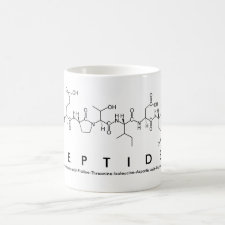
Authors: Barkaline VV, Douhaya YV, Tsakalof A
Article Title: Computer simulation based selection of optimal monomer for imprinting of tri-O-acetiladenosine in polymer matrix: vacuum calculations.
Publication date: 2013
Journal: Journal of Molecular Modeling
Volume: 19
Issue: (1)
Page numbers: 359-369.
DOI: 10.1007/s00894-012-1561-6
Abstract: Molecularly imprinted polymers can be anticipated as synthetic imitation of natural antibodies, receptors and enzymes. In case of successful imprinting the selectivity and affinity of the imprint for substrate molecules are comparable with those of natural counterparts. The selection of the optimal functional monomer, monomer/template ratio as well as choosing of polymerization solvent is crucial determinants of the successful imprinting. In the present study the simulation approach to the development of molecular imprinting polymers for the extraction of new protein kinase ATP-competitive inhibitors is presented. By imprinting tri-O-acetyladenosine into polymer matrix the synthetic reproduction of adenosine triphosphate binding site to protein kinases can be fabricated and further used for adenosine triphosphate analogs screening in different sources. The optimized geometrical structure and energy of the pre-polymerization complexes of tri-O-acetyladenosine (template) with three different monomers¨methacrylic acid, 3-vinyl benzoic acid and acrylamide in vacuum were calculated using hybrid quantum mechanical/molecular mechanical (QM/MM) approach. These calculations demonstrate that methacrylic acid forms the most stable complex with template, the next is 3-vinyl benzoic acid complex and the third¨acrylamide one. The bond energies of the complexes are shown to increase monotonically as more monomers are linked to the template. The same conclusions are made from purely quantum self-consistent field calculations of pre-polymerization complex energy and structure. Hybrid calculation is shown to be effective and can substantially accelerate the development of the imprinting technology
Template and target information: tri-O-acetiladenosine
Author keywords: molecular imprinted polymer, molecular mechanics, NWChem package, Pre-polymerization complex, QM, MM method, Self-consistent field



Join the Society for Molecular Imprinting

New items RSS feed
Sign-up for e-mail updates:
Choose between receiving an occasional newsletter or more frequent e-mail alerts.
Click here to go to the sign-up page.
Is your name elemental or peptidic? Enter your name and find out by clicking either of the buttons below!
Other products you may like:
 MIPdatabase
MIPdatabase









